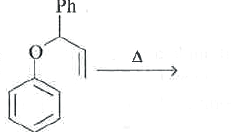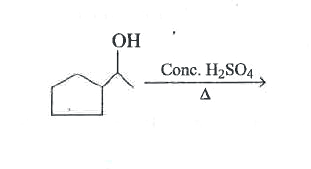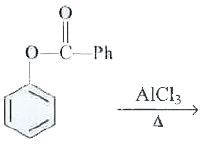A
B
C
D
Text Solution
AI Generated Solution
The correct Answer is:
|
Topper's Solved these Questions
ORGANIC REACTION MECHANISM
CENGAGE CHEMISTRY ENGLISH|Exercise Single correct|43 VideosView PlaylistORGANIC REACTION MECHANISM
CENGAGE CHEMISTRY ENGLISH|Exercise Assertion-Reasoning|12 VideosView PlaylistORGANIC REACTION MECHANISM
CENGAGE CHEMISTRY ENGLISH|Exercise Comprehension|35 VideosView PlaylistNCERT BASED EXERCISE
CENGAGE CHEMISTRY ENGLISH|Exercise Chemical Equilibrium|73 VideosView PlaylistP-BLOCK GROUP 13 - BORON FAMILY
CENGAGE CHEMISTRY ENGLISH|Exercise Exercise Archives (Subjecive)|9 VideosView Playlist
Similar Questions
Explore conceptually related problems
Knowledge Check
A
B
C
D
Submit
A
B
C
D
Submit
A
B
C
D
Submit
Similar Questions
Explore conceptually related problems
CENGAGE CHEMISTRY ENGLISH-ORGANIC REACTION MECHANISM-Multiple Correct
- Which of the following reactions are feasible ?
03:36
|
Play - Which of the following transformations are feasible ?
02:28
|
Play - In which of the following reactions, the intermediate species acyl nit...
09:35
|
Play - Which of the following statements are correct ?
03:33
|
Play - Which of the following is//are the rate determining step (s) of the gi...
02:05
|
Play - The products in the given reaction are : .
04:02
|
Play - Which of the following statements are correct about the addition of HB...
05:48
|
Play - Which of the following statements are correct ?
05:24
|
Play - In which of the following reactions, rearrangement is possible ?
03:55
|
Playing Now - Which of the following is an example of nucleophilic addition to aceta...
04:07
|
Play - In which of the reactions, there is a migration of alkyl group to carb...
04:46
|
Play - Which of the following statements are correct ?
03:13
|
Play - Which of the following statements/reactions are correct ?
03:20
|
Play - Which of the following statements is//are correct ?
03:16
|
Play - Consider the following reactions : (I) Me - underset ((A)) -= - Me o...
04:56
|
Play - Consider the following reactions : Which of the following stateme...
04:21
|
Play - Consider the following reactions : Which of the following stateme...
04:27
|
Play - Which of the following statements/reactions are correct ?
Text Solution
|
Play - Consider the following compounds Which of the following statements are...
04:12
|
Play - Which of the following reactions are both stereospecific and regiosele...
03:22
|
Play







